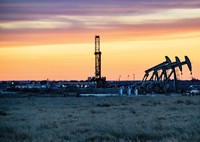Advertisement
Grab your lab coat. Let's get started
Welcome!
Welcome!
Create an account below to get 6 C&EN articles per month, receive newsletters and more - all free.
It seems this is your first time logging in online. Please enter the following information to continue.
As an ACS member you automatically get access to this site. All we need is few more details to create your reading experience.
Not you? Sign in with a different account.
Not you? Sign in with a different account.
ERROR 1
ERROR 1
ERROR 2
ERROR 2
ERROR 2
ERROR 2
ERROR 2
Password and Confirm password must match.
If you have an ACS member number, please enter it here so we can link this account to your membership. (optional)
ERROR 2
ACS values your privacy. By submitting your information, you are gaining access to C&EN and subscribing to our weekly newsletter. We use the information you provide to make your reading experience better, and we will never sell your data to third party members.
Environment
Biochar To The Rescue
Pyrolyzed biomass can sequester carbon dioxide, enrich soil, and clean up toxic waste at brownfield sites, study concludes
by Stephen K. Ritter
July 22, 2013
| A version of this story appeared in
Volume 91, Issue 29
Biochar, a type of charcoal made by slowly burning waste biomass under low-oxygen conditions, could become an unheralded way to help mitigate climate change. The carbon-based material could also assist in cleaning up abandoned industrial, mining, agricultural, and landfill sites, known as brownfields, and restore them for agricultural and other uses. Those are the conclusions of a study carried out by an international team led by Jingchun Tang of Nankai University, in China, that reviews biochar’s properties and applications (J. Biosci. Bioeng. 2013, DOI: 10.1016/j.jbiosc.2013.05.035). Scientists, engineers, and environmental advocates have been developing large-scale processes to turn materials such as wood chips, food waste, and animal manure into biochar as a way to permanently remove CO2 from the global carbon cycle. The recalcitrant material is stable for centuries. Thus it is ideal for sequestering fossil-fuel-generated CO2 that is absorbed by plants during photosynthesis—burying biochar is like coal mining in reverse. Like compost, the carbon in biochar can serve as a soil conditioner to restore fertility, enhance microbial activity, and improve water retention. Like activated carbon, the material adsorbs heavy metals and organic pollutants, trapping them in place so they aren’t taken up by plants and don’t migrate in groundwater. “Biochar clearly presents an important opportunity to reduce the impact of harmful pollutants in the environment and bring back into use huge areas of unproductive land,” says David Brown, chief executive of the Institution of Chemical Engineers, a global professional society.




Join the conversation
Contact the reporter
Submit a Letter to the Editor for publication
Engage with us on Twitter